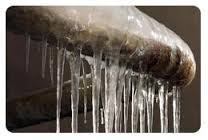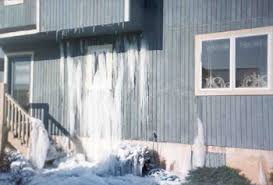For the past several years homeowner’s insurance companies in Indiana have been losing money, primarily because of wind and hail claims. Storm patterns in recent years have pelted the Midwest with wind and hail related claims that reach into the $ billions. In fact many insurance companies are paying out 2 dollars in claims, for every dollar they receive in premium.
This has been the primary reason the industry has seen such an increase in homeowners insurance premiums over the past few years. While this trend is not likely to end any time soon, some insurance companies are also changing the way they pay out claims.
Traditionally a homeowner’s policy has a dollar amount named as the deductible. That amount is subtracted from the amount of the claim. For example, if the policy has a $1,000 deductible and there is a $5,000 claim, the insurance company would pay out $4,000.
However there is a trend in the industry that has some companies changing their deductibles from a dollar amount to a percentage, especially if the claim has been caused by wind or hail.
 I recently spoke to a married couple who had damage to their roof caused by the outbreak of tornadoes we experienced in the month of November. They called their insurance company to file a claim, and discovered that their deductible for a wind claim is 10% of their dwelling value. Their dwelling value is $360,000 which made their deductible $36,000. Needless to say they ended up having to pay for the repairs to their roof out of their own pocket.
I recently spoke to a married couple who had damage to their roof caused by the outbreak of tornadoes we experienced in the month of November. They called their insurance company to file a claim, and discovered that their deductible for a wind claim is 10% of their dwelling value. Their dwelling value is $360,000 which made their deductible $36,000. Needless to say they ended up having to pay for the repairs to their roof out of their own pocket.
Did you catch that? Their deductible was $36,000 for wind and hail damages!
Unfortunately many other companies are following suit. Some very large and well-known insurance companies are changing their wind and hail deductibles to a % and most of their clients are unaware of the change. Often times clients are only notified of this change within the mountain of paperwork they receive in the mail from the company at the policies renewal.
Let’s face it; most people do not have the time to sift through that much paperwork. They file it away and assume that the coverages have remained the same.
The example given above of a 10% deductible is the most extreme case that I have seen. More frequently I am seeing wind and hail damage deductibles changing from a dollar amount to 1% or 2% of the dwelling coverage. 1% or 2% of the dwelling is still a significant amount of money to pay out of pocket at the stressful time of a claim.
Protect yourself.
1. Review your documents. Take the time to review the documents when you receive information in the mail from your insurance company. If you do not understand the language or have questions, take the policy to your agent and have them explain the coverages.
 2. Insist on an annual review. Your agent should be sitting down with you on an annual basis to review your coverages and to answer your questions. There are too many changes taking place in the homeowner’s insurance arena right now to ignore the paperwork and hope for the best.
2. Insist on an annual review. Your agent should be sitting down with you on an annual basis to review your coverages and to answer your questions. There are too many changes taking place in the homeowner’s insurance arena right now to ignore the paperwork and hope for the best.
3. Educate yourself. Too often times I hear people say that they paid their premium so the assumed everything was OK. Don’t turn a blind eye to your insurance coverages. Insurance is expensive so you should do you best to make sure that you understand what you are paying for.
















